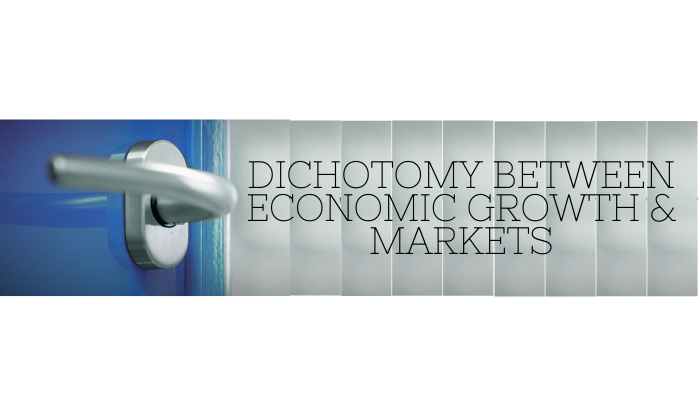Active intervention from the government is likely to break the vicious circle of slowdown
Indian markets opened in the year 2020 on a bright note with Sensex at a level close to 41500, thus continuing its upward trend of the last few weeks . However, economy continues to slow down. Latest GDP growth figure announced on Nov 29, 2019 for quarter ending Sep 30, 2019 was 4.5%. GDP growth rate has been steadily declining for the last few quarters. Various related statistics were also weak, showing that recovery can take a longer time.
My reasoning for this dichotomy between economy and markets is George Soros’s reflexive theory. Many times, economies get into self reinforcing behaviour leading to either virtuous spirals or vicious cycles. For example, demand goes down leading to industrial contraction which then leads to lower incomes and demand goes down even further. Soros says that only a few active actions have to be taken to break these spirals or cycles.
Indian government though a bit late has now realized that we are amidst a slowing cycle and is taking very concrete steps to come out of such a situation. On Dec 31, 2019, just a few days back, the government announced a mega infrastructure push of Rupees 102 lakh crores over the next 5 years. This money will be utilized for projects in energy, roads, railways and urban infrastructure. Implementation will not be easy, however intent is to have a sustained, concerted action with regular frequent reviews.
Another important development in the past quarter was on Sep 19, 2019 when the government announced a significant cut in corporate tax rates. Stock market expectedly was euphoric with Sensex going up by almost 2000 points and then another 1000 points the next day.
Before the big move of tax reduction, Finance Minister was introducing new measures almost every week. There were sector specific steps for automobile industry followed by proposals for real estate revival. Additionally, some medium term structural reforms were also initiated, for example, merger of several public sector banks. Intent is to create bigger banks with better systems and procedures including credit appraisal. There has been an attempt to infuse fresh capital and try to ease the credit conditions. Banks had given Rs 2.5 lakh crores in loans in 400 districts.
Some more measures are expected. In a recent conclave organized by The Economic Times, Finance Minister said that there will be further rationalization of GST. Also there are efforts to give fillip to foreign investment – 12 companies contemplating moving out of China have been actively talked to. In the budget on Feb 1, 2020, there is speculation that direct taxes might also be reduced.
RBI also has been steadily decreasing interest rates. In one year Indian repo rate has come down from 6.5% to 5.15%. Poor transmission is being addressed by asking banks to connect their home and auto loan rates to the Repo Rate controlled by RBI. This will lead to people really benefiting from lower interest rates. Higher tax rate on Foreign Portfolios is also being reversed. Consensus is that liquidity conditions are easing and the worst point is behind us.
Consequently, we believe that stock market valuation levels are at attractive buying levels, though lowest levels are always difficult to predict. Our bullish view on Indian equities remains intact and we should stay invested. We should utilize any dips for adding long term money to the portfolio. SIPs should definitely be continued. Basic principles of investing in equity markets including long term horizon, diversification and valuation should be operative always. Of course, there could again be range trading with a slightly downward bias for some time. However, our view is that with a strong policy driven government at the centre, favourable conditions exist in India to increase the growth rate again.
Resilience and holding power are keys to generating good returns in the equity market. For example, the escalation of USA – Iran tension has caused the markets to go down. However, a confluence of good and positive factors happens inevitably in an economy which is growing and has sound fundamentals. Scheme selection remains as important as ever since performance range of schemes is very wide and importantly, divergent valuations exist for large, mid and small caps.






